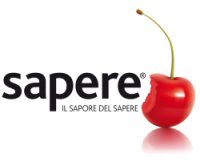Bamboo fibre
Green gold in pure cellulose
By Giulia Giardina
The focus on natural fibres in the textile industry has grown exponentially in recent years. Consumers and manufacturers are increasingly interested in finding raw materials that respect the environment at every stage of the production process. Thanks to its innumerable qualities, bamboo fibre has gained a foothold in the world of fashion.

For textile production the species of Phyllostachys heterocycla pubescens, commonly known as Moso. Bamboo grows very quickly, so much so that after about four years it is already ready for harvesting, and it grows taller, requiring less arable land than plants such as cotton. Its resilience allows it to survive in a wide range of temperatures, without the need for chemical and aggressive pesticides that would damage the environment. Bamboo plantations are a very important resource for our planet due to their large production of oxygen and rapid absorption of carbon dioxide; it is estimated that one hectare of bamboo forest can capture up to 17 tonnes of carbon dioxide per year.
Moso fibre is extraordinarily soft, not at all irritating and therefore suitable for sensitive skin. Its natural flexibility does not require blending with elastic fibres, and compared to silk and cashmere it offers a much more affordable price. The “Bamboo Kun” agent in the fibre blocks the proliferation of bacteria and helps to retain unpleasant odours while respecting the skin. Bamboo garments are entirely biodegradable and can be decomposed in the soil without releasing pollutants.
A fundamental step in the production chain concerns the way in which the fibre is treated to make fabrics. Very often the noble properties of bamboo are contaminated by toxic substances that are harmful to the planet and to workers’ health. Garments must be made without chemical additives, but rather using a mechanical process. This is a more expensive solution, as it uses the enzymes naturally contained in bamboo to crush its woody parts, but it respects the product in the interest of all. In addition, to guarantee healthy finishing processes for the consumer, international eco-certification would be appropriate, e.g. according to the reliable standards of OEKO–TEX® (https://www.centrocot.it/oeko-tex/standard-100-by-oeko-tex/).
Today, more than ever, there is a need for environmentally sustainable alternatives that respect raw materials and protect our planet and our skin.
Did you know all the properties of bamboo? What other textile fibres would you like to discover?
Let us know with a comment!
